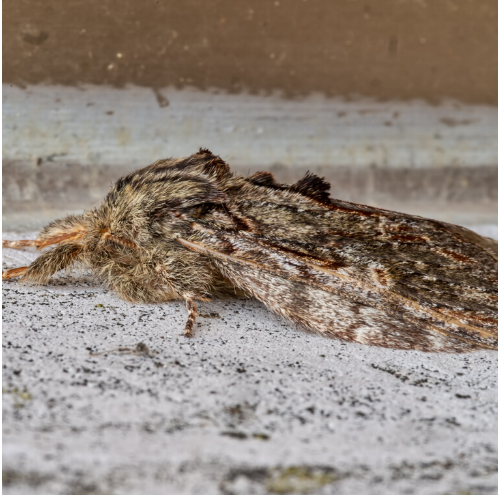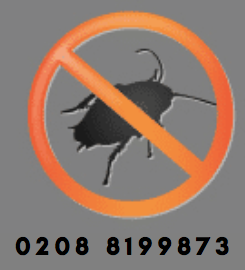Moth Control in Merton: Effective Strategies for a Moth-Free Home
Moth infestations can be a frustrating problem in homes, causing damage to clothing, fabrics, and stored food items. Merton offers professional moth control services to effectively eliminate moths from your home and prevent future infestations. In this article, we will discuss the importance of moth control, common signs of infestation, and effective strategies offered in Merton.

Understanding the Importance of Moth Control: Moths can cause significant damage to textiles, fabrics, and food products. Their larvae feed on natural fibers, such as wool, silk, and cotton, leading to holes and destruction of valuable items. Effective moth control is essential to protect your belongings, preserve the integrity of your home, and maintain a clean living environment.
Recognizing Signs of Moth Infestation: Detecting a moth infestation early is key to effective control. Look out for the following signs:
- Visible adult moths: Adult moths are typically small, with wingspans ranging from a few millimeters to a few centimeters. They may be seen flying around or resting on surfaces, especially during the evening.
- Larvae or caterpillars: Moth larvae are usually the cause of damage. Look for small, whitish, worm-like larvae crawling on fabrics or food items.
- Damaged fabrics: Check for holes, chewed edges, or signs of webbing on clothing, carpets, curtains, and other textiles.
- Silk or cocoon-like structures: Moths may leave behind silk threads or cocoon-like structures in corners, crevices, or hidden areas where they pupate.
- Presence of casemaking or webbing clothes moths: These species construct small cases or silken tubes that they drag along as they feed, leaving behind trails of silk and droppings.
Professional Moth Control Solutions in Merton: Merton offers professional pest control services equipped with the expertise and tools to effectively eliminate moths from your home. Here are some strategies they may employ:
- Inspection and Identification: Certified technicians will conduct a thorough inspection of your property to identify the type of moth species involved, locate their breeding areas, and assess the extent of the infestation. This assessment helps in developing a targeted treatment plan.
- Removal and Cleaning: The first step in moth control is removing and cleaning infested items. Pest control professionals may recommend washing or dry-cleaning affected fabrics, vacuuming carpets and upholstery, and discarding heavily infested items that cannot be salvaged.
- Insecticide Treatment: Pest control services may employ targeted insecticide treatments to eliminate moths and their larvae. They will use safe and approved products, applying them to infested areas, cracks, crevices, and other hiding spots where moths are likely to be found.
- Larval Control: To address moth larvae, pest control professionals may utilize specific treatments that target the immature stages of the moths. These treatments are designed to disrupt the lifecycle and prevent further damage.
- Preventive Measures: Pest control services can provide recommendations on preventive measures to avoid future infestations. This may include proper storage of clothing and textiles in airtight containers, regular cleaning and vacuuming of storage areas, and monitoring for any signs of re-infestation.
- Education and Advice: Professional pest control services offer education on moth behavior, prevention techniques, and steps you can take to make your home less attractive to moths. They can provide guidance on proper storage practices, identifying potential entry points, and implementing preventive measures.
- Follow-up Visits and Monitoring: After the initial treatment, follow-up visits may be scheduled to evaluate the effectiveness of the treatment, address any remaining concerns
Frequently asked questions (FAQs) about moth control in Merton
Q: How do I know if I have a moth infestation?
A: Signs of a moth infestation include the presence of adult moths flying around or resting on surfaces, damage to fabrics such as holes or chewed edges, the presence of larvae or caterpillars, and the appearance of silk threads or cocoon-like structures in corners or hidden areas.
Q: Are moths harmful to my health?
A: Moths themselves are not harmful to human health. However, moth larvae can cause damage to clothing, fabrics, and stored food items. They are not known to transmit diseases.
Q: Can I control a moth infestation on my own?
A: While some DIY methods may help in managing a minor infestation, professional moth control is generally more effective for complete eradication. Moth larvae can be difficult to locate and eliminate without proper expertise and treatment methods.
Q: Are the treatments safe for my family and pets?
A: Yes, professional pest control services prioritize the safety of your family and pets. They use approved insecticides and follow strict application guidelines to minimize any risks. However, it is important to follow the instructions provided by the technicians.
Q: How long does a moth treatment take?
A: The duration of a moth treatment depends on factors such as the severity of the infestation, the size of the property, and the treatment methods employed. Pest control professionals will provide you with an estimated timeframe based on your specific situation.
Q: Can moths come back after the treatment?
A: While a professional treatment significantly reduces the moth population, it is possible for new infestations to occur if preventive measures are not followed. Pest control professionals can provide guidance on how to prevent future infestations, including proper storage practices and regular monitoring.
Q: Can I save my infested clothing and fabrics?
A: In many cases, infested clothing and fabrics can be salvaged through proper cleaning methods. Pest control professionals may recommend washing or dry-cleaning affected items. However, heavily damaged or infested items may need to be discarded.
Q: How can I prevent future moth infestations?
A: Preventive measures include proper storage of clothing and fabrics in airtight containers, regular cleaning and vacuuming of storage areas, and monitoring for any signs of infestation. Pest control professionals can provide specific recommendations based on your situation.
Q: Are moth treatments environmentally friendly?
A: Pest control services strive to use environmentally friendly products and techniques. They follow guidelines to minimize any impact on the environment while effectively controlling the moth infestation.
Q: How soon can I expect results after the moth treatment?
A: You should start noticing a reduction in moth activity shortly after the treatment. However, complete eradication may take time, depending on the severity of the infestation and the treatment methods employed. Pest control professionals will guide you on what to expect.
If you have further questions or concerns about moth control in Merton, do not hesitate to reach out to professional pest control services. They will provide you with expert advice and tailored solutions to address your specific moth infestation.
Moths and Their Lifestyle: Adaptations and Behaviors
Moths are fascinating insects with diverse species and intriguing lifestyles. They exhibit various adaptations and behaviors that allow them to survive and thrive in different habitats and ecological niches. Let’s explore the lifestyle of moths and some of their notable characteristics.
- Nocturnal Activity: Many moth species are primarily nocturnal, meaning they are active during the night. This behavior helps them avoid predators and take advantage of the darkness to find mates, locate food sources, and navigate their environment. Nocturnal moths are often attracted to artificial light sources, which can sometimes lead to encounters with humans indoors.
- Diurnal Moths: While most moths are nocturnal, some species, known as diurnal moths, are active during the day. These moths have evolved to have specific adaptations, such as vibrant colors and patterns, to communicate and interact with other diurnal organisms, including birds, bees, and flowers.
- Wing Structure and Flight: Moths have characteristic wings covered in scales, which give them their distinct appearance. The scales provide insulation, protect the wings, and can contribute to camouflage or vibrant patterns for species-specific purposes. Moths utilize their wings for flight, often employing a distinctive fluttering pattern, although some species have more rapid and direct flight capabilities.
- Ecological Roles: Moths play important roles in ecosystems. As pollinators, they visit flowers in search of nectar, inadvertently transferring pollen from one flower to another. Moths also serve as a food source for various predators, including birds, bats, and other insectivorous animals, contributing to the intricate balance of predator-prey relationships in ecosystems.
- Feeding Habits: Moths exhibit diverse feeding habits based on their species and life stages. While adult moths primarily feed on nectar from flowers, some species do not feed at all and rely solely on energy reserves built up during their larval stage. Moth larvae, commonly known as caterpillars, have chewing mouthparts and feed on a variety of plant materials, including leaves, fruits, and seeds.
- Pheromone Communication: Moths employ chemical communication, specifically through the use of pheromones, to attract mates and communicate with other individuals. Female moths release sex pheromones, which are detected by males from a distance. This chemical signaling allows moths to find and identify potential mates, contributing to successful reproduction.
- Reproductive Strategies: Moths exhibit a range of reproductive strategies depending on their species. Most moths have indirect development, progressing through distinct life stages: egg, larva (caterpillar), pupa (cocoon or chrysalis), and adult. Female moths lay eggs on suitable host plants, and the hatched caterpillars feed and grow until they reach the pupal stage, where they undergo metamorphosis into adult moths.
- Protective Strategies: Moths have evolved various protective strategies to avoid predation. Some species have developed camouflage that allows them to blend into their surroundings, making them less visible to predators. Others have evolved warning coloration, advertising their toxic or unpalatable nature to potential predators. Certain moth species also possess defensive mechanisms like spines, hairs, or chemical defenses to deter predators.
- Migration: Several moth species engage in long-distance migration, often covering vast distances in search of favorable conditions. These migrations may occur annually, driven by seasonal changes in temperature, food availability, or breeding opportunities. These mass movements contribute to genetic diversity, population dynamics, and the dispersal of moths across different habitats.

